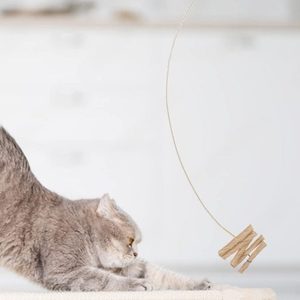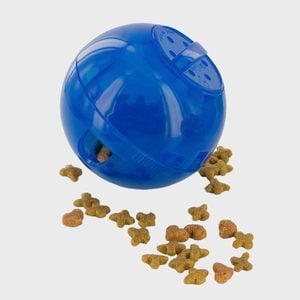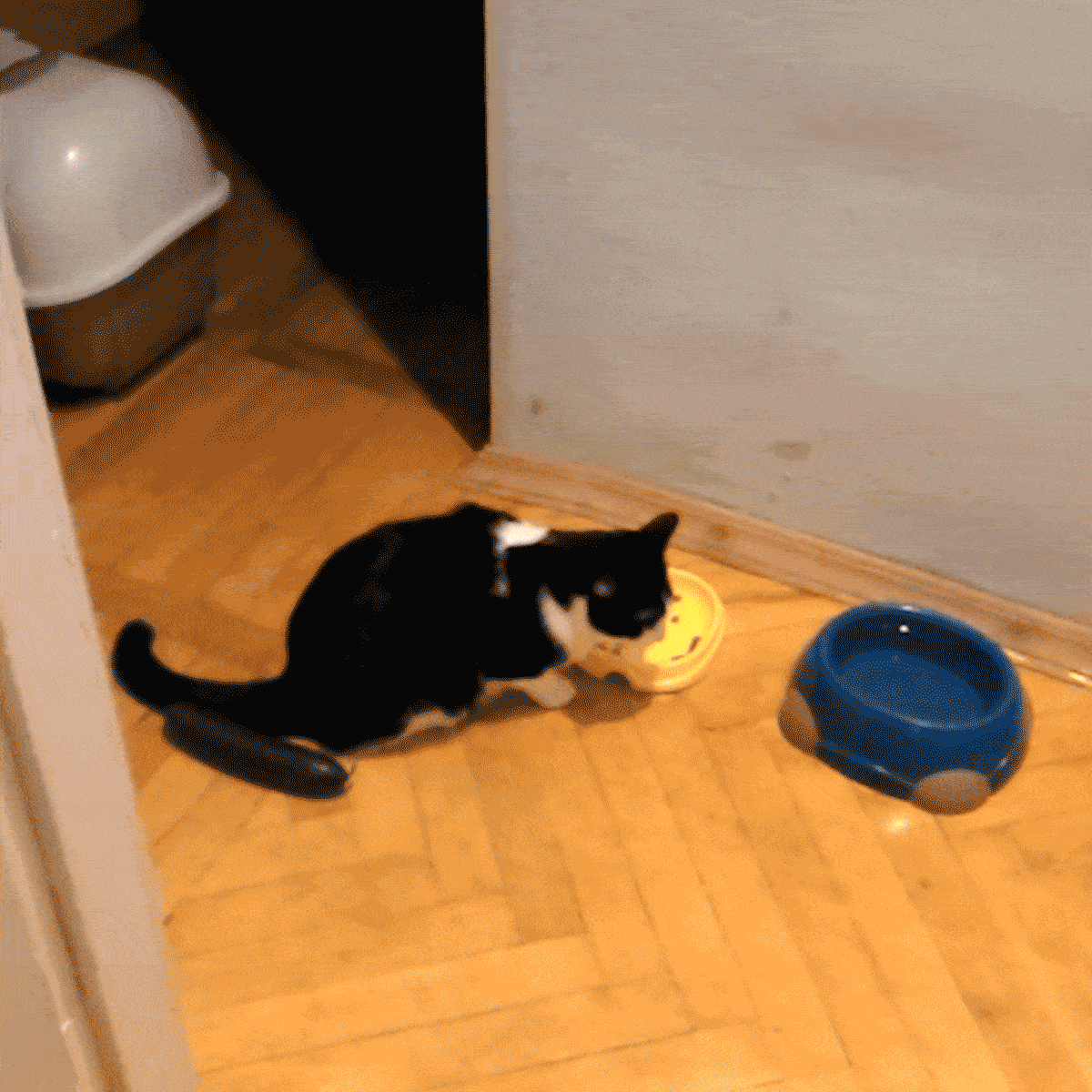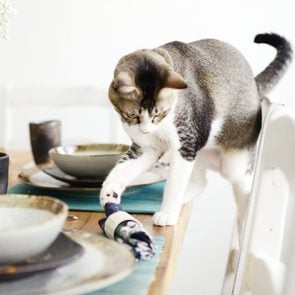Those sudden bursts of feline energy are hilarious … and slightly irritating when they happen late at night. Here’s what causes the cat zoomies.
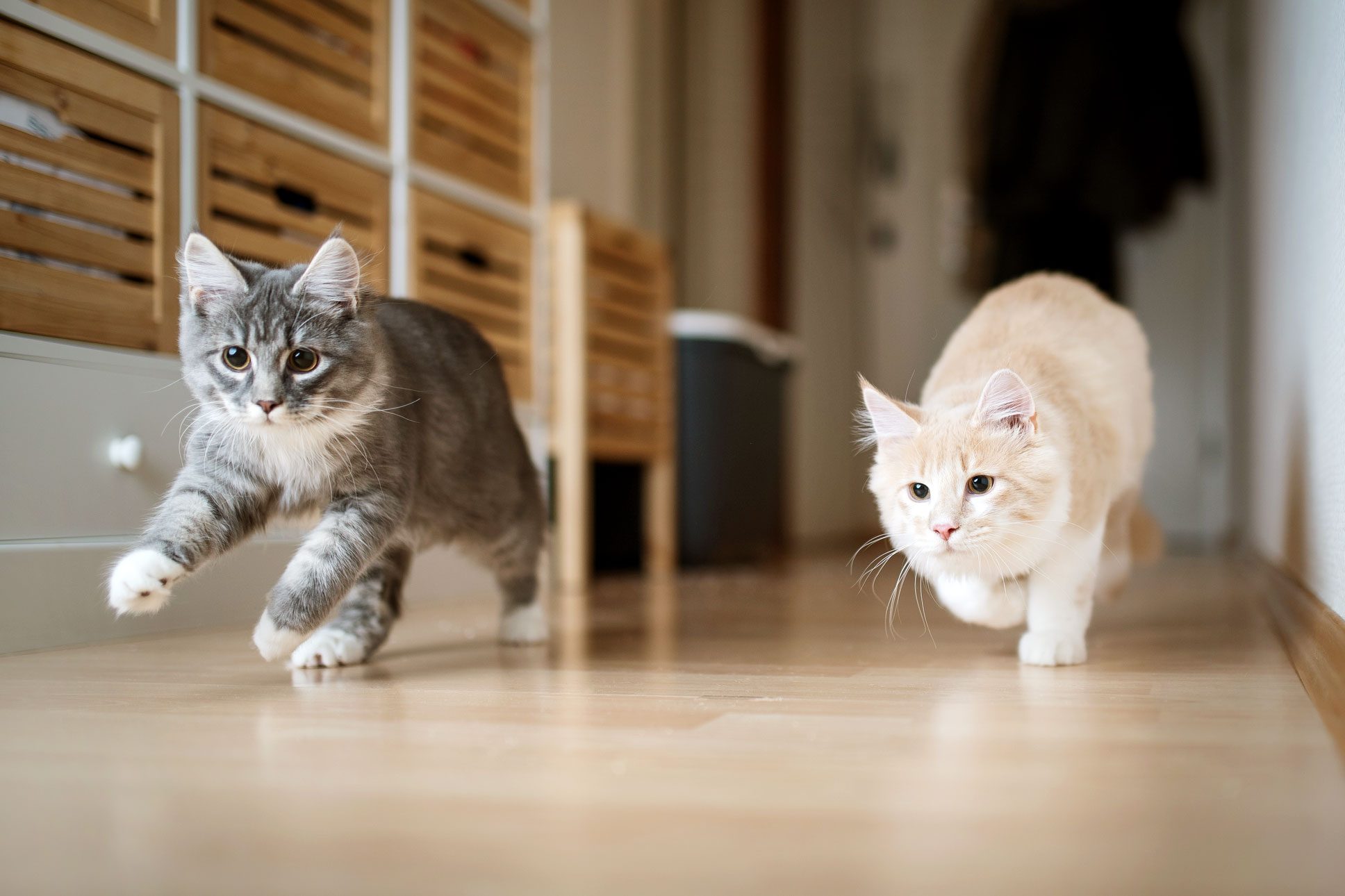
Why Do Cats Get the Zoomies?

If you’ve ever lived with a cat, you’ve probably seen it. One minute your little furball is curled up on the couch, a picture of feline contentment. And then bam! He’s flying up the stairs like a rocket ship, crashing off the walls and obliterating anything and everything in his way. “It’s the cat zoomies!” says certified cat behaviorist Pam Bennett-Johnson. “They go from zero to 100 miles per hour in no time.”
But why do cats get the zoomies? As with all the other mysteries of cat body language and cat behavior—like why cats meow, why cats love boxes and why cats knead—there’s a method to their madness. “Even when a cat’s behavior is strange, it always makes sense to the cat,” says Bennett-Johnson. “When you look at it, there’s a reason.”
So, what is that reason? We asked pet experts to explain this seemingly crazy cat behavior—and found out what you can do about it. Also, explore how long can you leave a cat alone.
Get Reader’s Digest’s Read Up newsletter for more pet insights, humor, cleaning, travel, tech and fun facts all week long.
What are cat zoomies?
Essentially, the zoomies are just sudden bursts of energy that build up in your cat and have to be released. Sometimes the cat zoomies come on after a long nap or a trip to the litter box, but often they arrive completely out of the blue. “Cats will sleep most of the day, but then they have all this pent-up energy, and they need to get it out,” says Frank Caporale, DVM, a veterinarian in Ormond Beach, Florida.
The zoomies are common in both kittens and adult cats, and they appear in other species as well. (Dog zoomies are also a thing!) There’s even a technical name for it: They’re called frenetic rapid activity periods, or FRAPs. But most people just call them the cat zoomies.
Why do cats get the zoomies?
The answer is a little fuzzy. “No expert can say definitively: ‘This is why the cat gets the zoomies,'” says Bennett-Johnson, author of the bestselling cat-training guide Think Like a Cat. “But we do have theories.”
Playfulness
Most of the time, the cat zoomies are really just a way for a cat to have fun and blow off some steam. “It’s a play behavior,” says Dr. Caporale. “It means the cat is happy and feels like having fun.”
A hunting instinct
The zoomies may also harken back to the way cats hunt in the wild. “Cats are ambush predators,” says Bennett-Johnson. “They hide and lie in wait for their prey, and they’re storing up energy to be ready to pounce.”
Indoor cats build up the same kind of energy as they sleep during the day (it’s part of why cats sleep so much), and if they don’t get enough ways to release it, they can get the zoomies. “All of a sudden, they feel the need to make the hunt,” says Dr. Caporale. “It’s like they’re back in the Serengeti.”
A trip to the litter box
Many cats get the zoomies after using the litter box, and experts have several theories as to why. “For some cats, the litter box is an uncomfortable place,” says Bennett-Johnson. “They feel vulnerable in there, and they can’t wait to get out.” Anxious cats may fear a predator could track them by the smell of their waste and want to get away as quickly as possible. (It’s also why they bury their waste.)
Bowel movements also stimulate the cat’s vagus nerve, the longest of the cranial nerves, which some think might give the cat a brief feeling of euphoria. “Some people call it poo-phoria,” says Bennett-Johnson. “That to me is a very logical explanation for that burst of the zoomies after the litter box.”
A health issue
Sometimes the reason for the cat zoomies isn’t positive. Cats may display quick bursts of movement if they are being bitten by fleas or if they are experiencing acute pain. “If a cat experiences any discomfort in the litter box, for example, he may rush out,” says Dr. Caporale. “Essentially the cat is thinking, If I run away, I’ll get away from the pain.” In those cases, the zoomies can be a sign it’s time to take your cat to the vet.
When is the most common time for the cat zoomies?
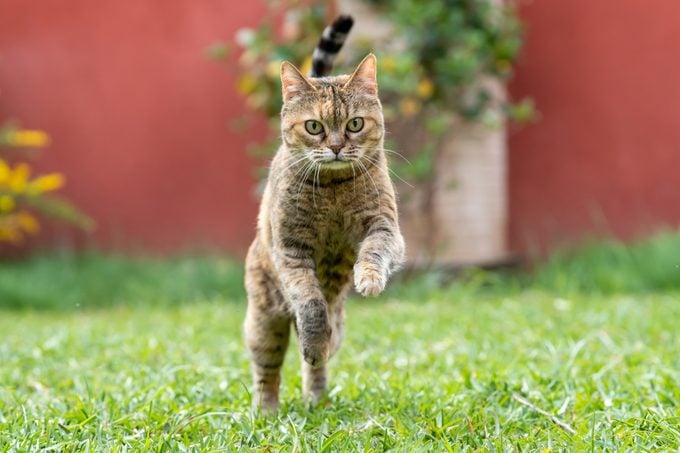
Cats can get the zoomies at any time, but they seem to occur most often in the evening. That’s because this behavior is tied to a cat’s internal rhythms. Although people tend to think of cats as nocturnal creatures, “cats are actually crepuscular,” says Bennett-Johnson, “meaning they’re most active at dusk and dawn because that’s typically when their prey would be active.” But because today’s house cats tend to sleep more during the day when their owners are at work, their schedules can be a little off, leading to zoomies later in the night.
“At night, we tend to be winding down with our activity, but cats are revving up,” says Bennett-Johnson. “And if they’re not getting a release for their energy during the day, then chances are, at some point in the night, the cat’s going to go, ‘I’ve got to release this!’ And suddenly it sounds like 14 horses are running down the hallway outside your bedroom.”
Should you ignore cat zoomies?
For the most part, the cat zoomies really are perfectly normal, and if your cat seems happy and looks to be enjoying the workout, it’s fine to let him or her be. But there are times when you should definitely not ignore them and instead head to the vet.
“It’s all about the context,” says Dr. Caporale. “Pay attention to the cat’s body language. Does it look like he is fearful or in pain? Is he hiding after he runs? Have you noticed any other changes in his behavior? Those are the signs the cat is not just having fun and you have to rule out something medical.”
How to prevent nighttime bursts of energy
Of course, even normal cat zoomies can be disruptive when they happen at 2 a.m. But fortunately, the secret to preventing this late-night craziness is simple: Make sure your cat has ways to release all that energy during the day. Experts suggest setting aside time every day for interactive play. Use a wand or fishing-pole toy to play with your cat—and make sure you let them catch the toy eventually. “They need to get that reward in the end,” says Dr. Caporale.
Also, provide your cat with ways to entertain himself when you’re away. “A bunch of toys in a toy basket in a corner isn’t enough,” says Bennett-Johnson. “I recommend to people that they strategically place things—like a ping-pong ball in an empty tissue box, or a fuzzy mouse hiding around the chair leg—that the cat can discover and have 20 seconds of play time to just release that energy.”
Puzzle feeders, which require cats to move puzzle pieces around to claim treats, also keep a cat’s mind sharp, and even something as simple as a treasure hunt—where you hide treats around the room for the cat to find—can work too. While there are plenty of cat toys you can buy, for a quick DIY option, Bennett-Johnson suggests taking a small plastic water bottle, cutting some holes in it and putting treats inside. “When the cat bats it around, the treats fall out of the holes and the cat gets a reward,” she says. “It’s very basic, but it gives them a way to work for their food, which is what cats are hardwired to do.”
Cat toys to ward off the zoomies
An active cat is a happy cat
Keeping your cat active and engaged will not only reduce the cat zoomies—it will likely also improve the bond between you and your cat. “If the cat is busy and entertained, it will cut down on behaviors you really don’t like and which can be destructive, like climbing the curtains or picking on a companion cat,” says Bennett-Johnson. “And we owe it to our cats. We have that obligation to make sure that we’ve provided an environment for them that is not only safe and healthy but also rewarding and stimulating.”
Sources:
- Pam Bennett-Johnson, certified cat behaviorist and author of Think Like a Cat
- Frank Caporale, DVM, a veterinarian in Ormond Beach, Florida





















